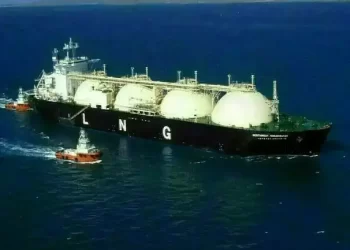LONDON: Base metals fell for a second day on Friday with copper on track for the biggest weekly fall in eight months as U.S. President Donald Trump’s sweeping tariff plans sparked recession fears.
Benchmark three-month copper on the London Metal Exchange (LME) lost 2.6% to $9,121 per metric ton by 0945 GMT after hitting $9,111, the lowest since February 4. The metal is down 6.8% so far this week.
“Growth-dependent metals have a bit of a disaster at the moment with fears that tariffs would cause recession,” said Dan Smith, head of research at Amalgamated Metal Trading.
On Wednesday, Trump announced Washington’s steepest trade barriers in more than 100 years. The focus is on potential negotiations between the U.S. and other countries before the higher rates are launched on April 9.
“But confidence has been damaged badly, and it is not something you can undo quickly,” Smith said. The U.S. currency fell over the last three months, which normally would support dollar-priced metals, “but it is unable to help much if we are heading into potential recession,” he added.
JP Morgan now sees a 60% chance of the global economy entering recession by year end, up from 40% previously.
Copper edges up ahead of US tariffs while tin extends rally
For copper, Comex futures reduced their premium over the LME benchmark this week from last week’s peak, easing stimulus to continue shipping the metal to Comex stocks, and removing part of the support for both contracts. The U.S. continues a probe on possible new copper
tariffs.
LME aluminium, already subject to the U.S. 25% import tariff, was last down 1.0% at $2,422.50 a ton after hitting $2,416, its lowest since September 13. The contract has been falling for 12 sessions.
Prices for alumina, a raw material to make aluminium, in China slid 46% so far in 2025, reducing production costs of aluminium smelters.
Potential support for aluminium could come from China if the country’s output growth reaches the ceiling of the official smelting capacity cap.
“This cap in theory limits supply growth, which would be bullish, but imports to China have been weak recently indicating relatively weak demand,” Smith said.
Tin was down 2.8% at $36,250 but unchanged from a week earlier amid worries that last week’s earthquake in Myanmar would delay restart of mining at a major region.
Zinc fell 1.2% to $2,679.50, lead lost 1.4% to $1,927.50 and nickel slid 1.9% to $15,430.
Zinc, lead and nickel hit seven-month, two-month and one-month low, respectively.
LONDON: Base metals fell for a second day on Friday with copper on track for the biggest weekly fall in eight months as U.S. President Donald Trump’s sweeping tariff plans sparked recession fears.
Benchmark three-month copper on the London Metal Exchange (LME) lost 2.6% to $9,121 per metric ton by 0945 GMT after hitting $9,111, the lowest since February 4. The metal is down 6.8% so far this week.
“Growth-dependent metals have a bit of a disaster at the moment with fears that tariffs would cause recession,” said Dan Smith, head of research at Amalgamated Metal Trading.
On Wednesday, Trump announced Washington’s steepest trade barriers in more than 100 years. The focus is on potential negotiations between the U.S. and other countries before the higher rates are launched on April 9.
“But confidence has been damaged badly, and it is not something you can undo quickly,” Smith said. The U.S. currency fell over the last three months, which normally would support dollar-priced metals, “but it is unable to help much if we are heading into potential recession,” he added.
JP Morgan now sees a 60% chance of the global economy entering recession by year end, up from 40% previously.
Copper edges up ahead of US tariffs while tin extends rally
For copper, Comex futures reduced their premium over the LME benchmark this week from last week’s peak, easing stimulus to continue shipping the metal to Comex stocks, and removing part of the support for both contracts. The U.S. continues a probe on possible new copper
tariffs.
LME aluminium, already subject to the U.S. 25% import tariff, was last down 1.0% at $2,422.50 a ton after hitting $2,416, its lowest since September 13. The contract has been falling for 12 sessions.
Prices for alumina, a raw material to make aluminium, in China slid 46% so far in 2025, reducing production costs of aluminium smelters.
Potential support for aluminium could come from China if the country’s output growth reaches the ceiling of the official smelting capacity cap.
“This cap in theory limits supply growth, which would be bullish, but imports to China have been weak recently indicating relatively weak demand,” Smith said.
Tin was down 2.8% at $36,250 but unchanged from a week earlier amid worries that last week’s earthquake in Myanmar would delay restart of mining at a major region.
Zinc fell 1.2% to $2,679.50, lead lost 1.4% to $1,927.50 and nickel slid 1.9% to $15,430.
Zinc, lead and nickel hit seven-month, two-month and one-month low, respectively.









